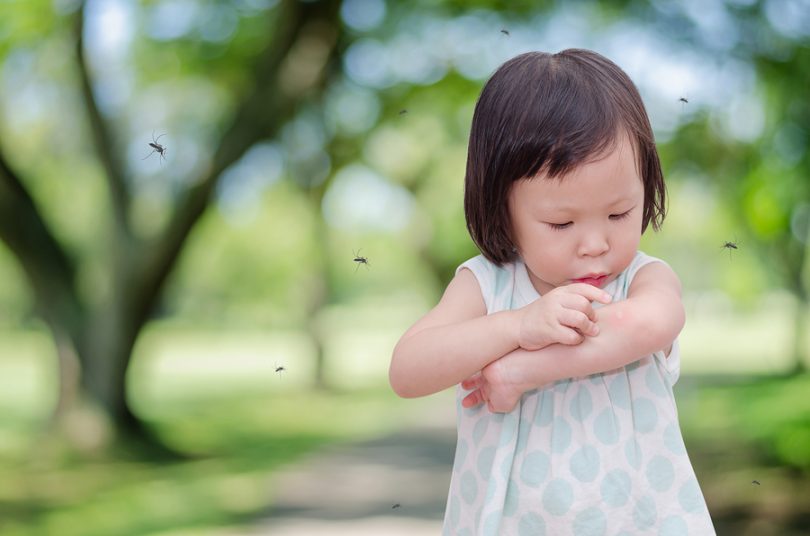To help your child avoid common springtime allergens like pollen, bug bites and poison ivy, just remember these three words: Get. On. It.
“Not every child is allergic, and if yours is not, you don’t have to worry about it,”
said Dr. Clay Stallworth, a pediatrician at Augusta University Health West Wheeler. “But if your child is, be disciplined. Just get on it every day with whatever kind of control measures your child needs to help avoid an itchy, uncomfortable allergic reaction, depending on the source.”
When you see the pollen
Once pollen starts covering your car and everything else, it’s honestly a little late to start allergy medications. Most likely, your child is already suffering from watery eyes; sneezing and runny nose; an itchy throat; and congestion.
An allergy sufferer himself, Stallworth said, “The second I start seeing bulbs come up from the ground in February, I start taking my allergy medications every day so I can get ahead of the symptoms.”
So mark your calendar: Call ahead and get a prescription from your child’s pediatrician or stock up on your preferred over-the-counter medication. If it’s hard for you or your child to remember to take the medication, make it a part of another routine, like after your child brushes his or her teeth.
It’s difficult especially for a child to avoid being outdoors when spring beckons with warm weather, but you can avoid bringing pollen indoors. Start by checking all of your air filters and making sure to replace them regularly; keep doors and windows closed; and even take your shoes and jackets off at the door.
“Pollen is hard to avoid; it’s everywhere,” said Stallworth. “So it does have to be a daily task to remember your medication and to do your best to reduce pollen exposure.”
Biting bugs in warm weather
To have the least sun exposure, experts say to go outdoors in the early morning or late afternoon. But guess what: You’ll have to then deal with pesky mosquitoes. The biting bugs are more active during those times of day and tend to avoid the bright heat when the sun is higher.
“Unfortunately, just like the sun, there are a lot of mosquitoes in the South, and if you try to avoid the one, you hit the other,” said Stallworth.
As with pollen allergies, some people tend to be more allergic to bug bites. Bites that don’t bother some will cause itchy welts in others that last a week—and the more you scratch, the higher the risk of a secondary bacterial infection.
If your child falls into the latter category, bug sprays containing the chemical DEET are very safe and recommended, said Stallworth. But if you’re wary of using chemicals, light clothing is another very effective deterrent. “In fact, clothing is even more effective than a spray, which can be wiped or sweated off,” said Stallworth.
Leaves of three
It’s estimated that about 50 to 75 percent of us are allergic to poison ivy, the most well-known of the poisonous plants that can cause itchy, painful blisters if they come in contact with skin.
The culprit is urushiol, an oil that is present in the stem, leaves and even the roots of the plant. The most important thing to remember with poison ivy is to practice vigilance if you come across it growing in your yard. Carefully remove the vine or shrub along with the roots (use gloves and wear a long-sleeved shirt and pants, then wash all clothing). Never burn the plant as that will release oils into the air, possibly for miles, and can lead to serious consequences, even death, if the fumes are breathed.
With children, show them pictures of the plant so they know to avoid it, and teach them the childhood rhyme, “Leaves of three, let them be.”
If they do come in contact with the plant, use soap and water immediately to wash the oil from the skin. Don’t wait: The sooner you remove the oil, the better chance you have of reducing a reaction. Also remove any clothing that may have oils from the plant and wash them immediately. Commonly, if your child is allergic, a rash will develop in a day or two. The blisters themselves won’t cause you or anyone else to get a rash if you touch them, but they will be painful and will likely pop.
Supportive care using calamine lotion to help dry up the blisters as well as baking soda or colloidal oatmeal for the itching can help. But if your child has swelling, pus, a rash that spreads to the eyes, mouth or genital area, a fever over 100 degrees or a rash that doesn’t improve after a few weeks, check in with your pediatrician. Trouble breathing or swallowing means a severe reaction, and you should go to the emergency room right away.
Still—“You can’t live indoors,” said Stallworth. “So what I tell parents—and what I do myself—is to just get on it.”




